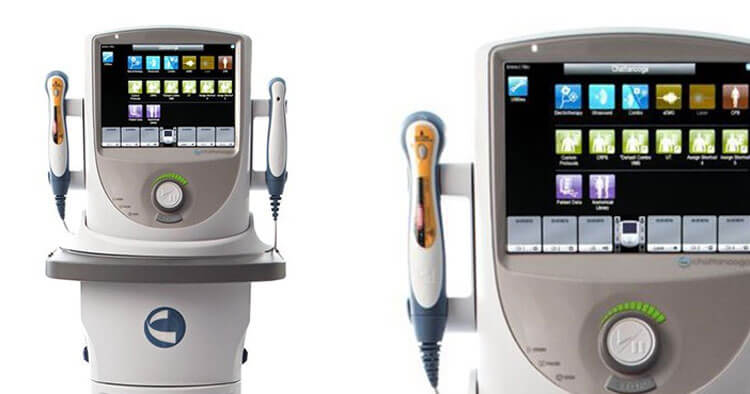What Is Laser?
Laser therapy refers to the use of laser in physiotherapy, or other medical or allied health disciplines. The word Laser is actually an acronym and stands for Light Amplification by the Stimulated Emission of Radiation. In simple terms, laser can be considered to be a form of light amplifier. Where laser therapy provides enhancement of the particular properties of light energy.
Laser light will behave according to the basic laws of light. In that it travels in straight lines at a constant velocity in space. It can be transmitted, reflected, refracted and absorbed. Laser energy is emitted in a organised format rather than a random pattern as from a common light source such as LEDs.
Low Level Laser Therapy
Low level laser therapy (LLLT) is a form of laser therapy used in
physiotherapy that uses low level (low power) lasers. It may also be referred to as low-power laser, soft laser, cold laser, therapeutic laser, and laser acupuncture. High power lasers such as those used in laser medicine destroy or cut tissue. Whereas the low power laser therapy in physiotherapy is used with the intention of stimulating and encouraging cell function.
There are a few properties that distinguish Laser from conventional light sources. The aspects of laser light which are deemed to make it special include:
- Monochromacity: Is probably the most important factor, as many of the therapeutic effects have been noted in various trials with light which is non-coherent.
- Coherence
- Polarisation: It is thought that the polarisation is soon lost within the tissues & may therefore be less important than was thought at first.
However there is doubt as to exactly how essential these properties of laser light are in relation to the therapeutic application of this energy form.
Laser Therapy And Tissue Interaction
As with many other forms of energy delivered to the patient under the umbrella of electrotherapy. The primary effects of low level laser therapy are divided into thermal and non thermal effects. It is unclear how low level laser therapy actually works. However the primary mechanisms by which laser in physiotherapy is considered to achieve its physiological and therefore therapeutic effects are that when LLLT is applied to the body’s tissues it delivers energy at a level sufficient to:
- Disturb local electron orbits & result in the generation of heat.
- Initiate chemical change.
- Disrupt molecular bonds & produce free radicals.
Photochemical reactions are well known in biological research. It may be that the light applied in low level laser therapy reacts with the respiratory enzyme cytochrome c-oxidase. Which is involved in the electron transport chain in mitochondria.
Where photons of light energy are absorbed by injured cells, and transformed into biochemical energy in the mitochondria. You mitochondria are described as the “power plants” within all cells. The converted energy stimulates production of new proteins needed for cellular repair of injured muscle, tendon, muscle, nerves…
Clinical Use
Both laboratory and clinical trial based research has mixed results regarding the effectiveness of laser. And as such the use of LLLT in physiotherapy can be considered to be controversial. In physiotherapy Laser is used for treatment of arthropathies like rheumatoid arthritis, in pain management, and in soft tissue injury.
At Sydney Physio Clinic there are some specific yet limited situations where we offer Laser as a treatment modality to our patients. This is as currently the research suggests there is tentative evidence of some limited benefit for the use of Laser in
tendinopathy and
frozen shoulders.
Disclaimer: Sydney Physio Clinic does not endorse any treatments, procedures, products mentioned. This information is provided as an educational service and is not intended to serve as medical advice. Anyone seeking specific advice or assistance on The Use Of Laser Therapy In Physiotherapy should consult his or her general practitioner, physiotherapist or otherwise appropriately skilled practitioner.


